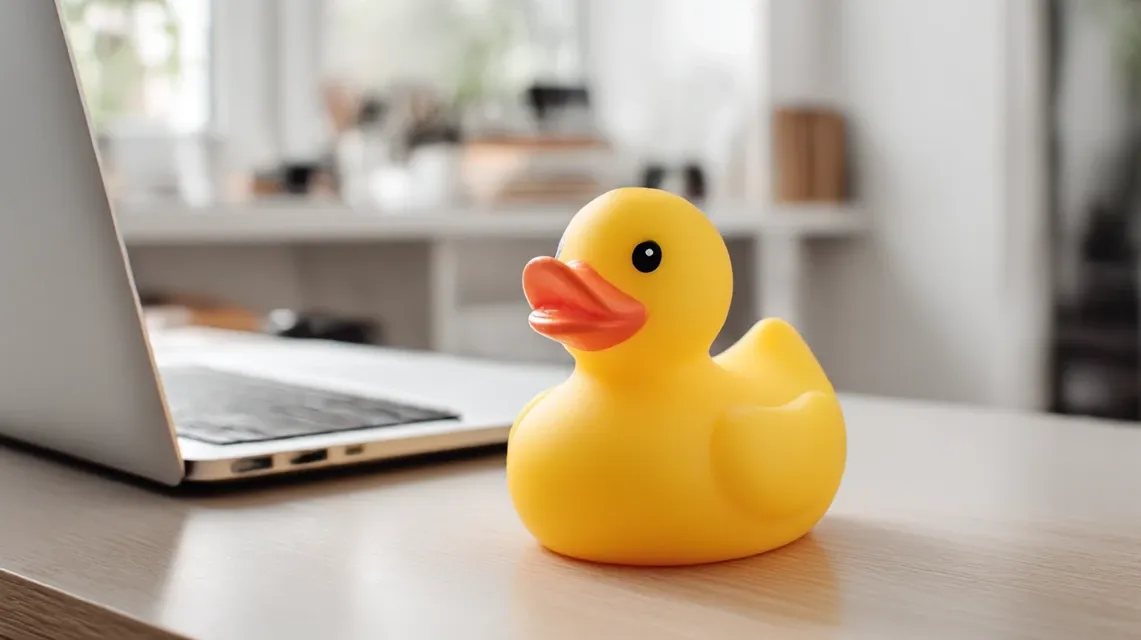Ask Better, Work Better: The Case for Writing Your Question First
Too often, asking for help turns into a slow, frustrating process—long threads, missed context, repeated questions, or just… silence.
It’s not because people don’t want to help. It’s because they don’t always know how to help.
Whether you're reaching out in a Slack channel, a team email, or even talking to ChatGPT—if your question isn’t clear, focused, and grounded in context, collaboration stalls.
This guide is here to fix that.
With a few simple habits, you can make it easy for others to jump in, share insight, and move things forward—without needing a meeting or back-and-forth.
Async-first, low-friction, high-impact.
Here’s what this guide covers, and how it can help you ask better questions and collaborate more effectively—no matter the context:
Table of Contents
- Before asking for help—pause and write your question.
- Use AI as a Rubber Duck
- Post It Publicly
- Things to Avoid
- Discipline Builds Leverage (with AI too)
- Why This Matters—Especially Remotely
- Quick Checklist Before You Ask
- Extra Tips Inspired by “How To Ask Questions The Smart Way”
If You're Feeling Stuck, Start Here

Before asking for help—pause and write your question.
Why? Because writing helps you think. When you slow down and put your problem into words, you often get clarity. You identify what you’re really stuck on, what you’ve already tried, and where the gaps are. Sometimes, the answer shows up before you even hit send.
This isn’t just good manners—it's good collaboration. Whether you're asking a teammate or an AI, a well-thought-out question respects their time and increases your chances of a fast, useful answer.
Use AI as a Rubber Duck
Explaining your question to ChatGPT—even if you're not looking for a direct answer—is a great way to clarify your thinking. This “rubber duck debugging” approach can help you organize your thoughts, spot missing details, or even solve the problem on your own.
Post It Publicly
Once you've written a clear, thoughtful question—share it publicly (e.g., team channel or shared thread):
- More eyes → more ideas
- You remove pressure from any one person
- You create space for others to learn from the problem
- You give shared context to the whole team
Private DMs can make someone feel solely responsible for solving it. In contrast, a shared thread invites contributions, suggestions, and broader collaboration.
If you're using Slack, choose the appropriate channel.
If we have a channel list or documentation, consider linking it here.
You can also include helpful notes in channel descriptions.
This isn’t about “bothering” others—it’s about making work more collaborative and transparent.
If You're Feeling Stuck, Start Here
- What are you trying to do?
State your goal in one line. - What’s going wrong?
Include symptoms, not guesses. - What have you already tried?
Help people avoid repeating things you’ve already done. - What context matters?
Include just enough background—config, code, tools—not your life story.
Things to Avoid
- 🚫 “Do you have a sec to chat?”
- 🚫 “Can we hop on a quick call?”
- 🚫 “Can we meet later to talk about X?”
Unless you've already tried writing things down and still hit a wall, avoid asking for live time.
Live meetings cost more energy and are often used to clarify what could've been shared up front. They interrupt others’ focus and shift problem-solving responsibility entirely onto them.
✅ Try the async route first:
Write it down, share it clearly, and only suggest a meeting if that hasn’t worked.
Discipline Builds Leverage (with AI too)
A nice bonus: the more you practice writing structured, specific questions, the better your experience will be with AI tools. AI (like humans) gives sharper answers to sharper questions.
Same skills, better outcomes.
Why This Matters—Especially Remotely
Learning to collaborate effectively in an async/remote setting means preparing as much as possible before involving others.
It shows respect, self-discipline, and helps everyone move faster.
When you put in the effort to be clear and thoughtful,
others are far more likely to match that energy and respond helpfully.
Trust that your preparation makes a difference.
Quick Checklist Before You Ask
- Have I clearly stated what I’m trying to achieve?
- Did I explain what’s not working?
- Have I mentioned what I already tried?
- Is the context minimal but clear?
- Is my question focused and specific?
- Is it public and async-friendly?
- Have I avoided vague requests for meetings or live chats?
- Is the tone respectful and collaborative?
Extra Tips from “How To Ask Questions The Smart Way”
- Search first. Google, docs, forums—log what you’ve looked at.
- Show thinking. Include what you've learned or ruled out.
- Don’t over-explain. Be concise, not vague or overwhelming.
- Don’t ask for private replies. Collaboration works best in public.
- Be precise, but don’t expect magic: ask for suggestions, not solutions.
A good question is a gift.
You’re not just asking for help—you’re offering a chance to solve something together.
The first thing to understand is that hackers actually like hard problems and good, thought-provoking questions about them. If we didn't, we wouldn't be here. If you give us an interesting question to chew on we'll be grateful to you; good questions are a stimulus and a gift. Good questions help us develop our understanding, and often reveal problems we might not have noticed or thought about otherwise. Among hackers, “Good question!” is a strong and sincere compliment.
— Eric S. Raymond & Rick Moen, How To Ask Questions The Smart Way

